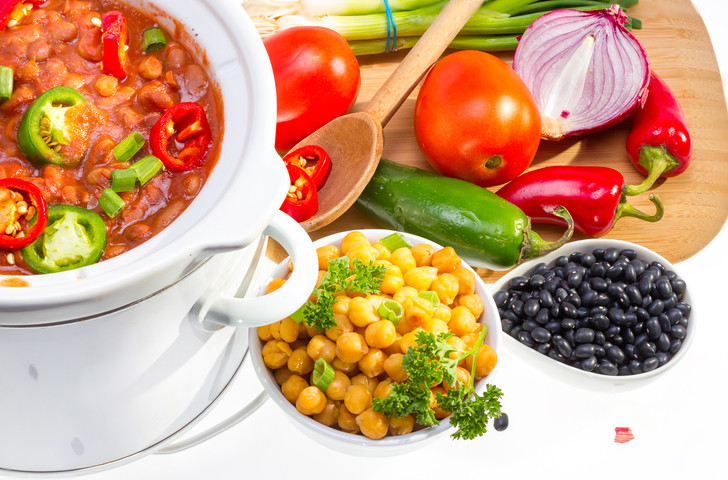
FEATURE — Do you ever wish you could slow it all down? Life seems to get busier and busier by the minute as we try to meet the demands of work, school, children and many other responsibilities. You can use a slow cooker to reduce time spent in the kitchen preparing meals. Quick preparation and slow cooking is the perfect way to have a delicious hot meal waiting for you and your family at dinnertime.

A slow cooker is very versatile. With low heat and a little bit of liquid, you can use it to cook many different kinds of food. Meat, chicken and fish will become tender and moist. Vegetables can be cooked low and slow, and paired with other foods for a well-rounded meal. You can even use your slow cooker to make a dessert!
Slow cooker safety
When using a slow cooker, you want to pay attention to its size. Filling the cooker between half to two-thirds of the way full will produce the best results. Filling it too full does not allow for enough air circulation inside the slow cooker. The lack of circulation may prevent all of the contents inside from reaching hot enough temperatures to kill harmful bacteria. In other words, you could end up with food poisoning if your meal doesn’t get hot enough.
Here are a few other safety tips to follow:
- Don’t store leftovers or reheat food in your slow cooker. The thickness of the crock doesn’t allow the food inside to reach a hot enough temperature quick enough to kill harmful bacteria that may be present in leftovers.
- Avoid placing your crock full of leftovers in the fridge. The thick insulating walls of the pot will keep the food from cooling down quickly enough. Take the food out of the crock, place it into small shallow containers and then place them in the fridge to cool.
- Keep meat separate from vegetables prior to the beginning of cooking time. If you choose to prep your recipe before cooking time, keep it in smaller containers in the refrigerator, only combining at the start of cooking time.
- Don’t serve food that was cooking in a slow cooker during a power outage. You never know how long the food may have been in the danger temperature zone while the power was out.
- Use thawed foods. Frozen foods may remain in the danger temperature zone for too long. The food needs to reach 140 degrees as soon as possible.
- Use a food thermometer to check foods for proper internal temperatures. You can find a chart listing proper temperatures here.

Knowing how to handle the crock, the inside of the slow cooker, is another important part of using a slow cooker safely. Some have a crock that remains fixed inside the cooking unit and others have a removable crock.
You want to avoid putting your crock through quick temperature changes. Cold food placed inside a preheated crock, or a warm crock placed in cold water, may cause cracking. You also want to avoid placing the base of a slow cooker in water as it might damage the electrical component of the crock.
Adapting recipes for a slow cooker
Many recipes can be adapted for use in a slow cooker even though they call for a different cooking method. Click here for tips on converting a recipe for use in a slow cooker.
When using a slow cooker, you’ll need to adjust the cooking time.
- If a standard recipe says cook 15-30 minutes, cook in a slow cooker on high heat for 1 1/2 to 2 1/2 hours or in a slow cooker on low heat for 4-6 hours.
- If a standard recipe says cook 35-45 minutes, cook in a slow cooker on high heat for 3-4 hours or in a slow cooker on low heat for 6-10 hours.
- If a standard recipe says cook 50 minutes to 3 hours, cook in a slow cooker on high heat for 4-6 hours or in a slow cooker on low heat for 8-18 hours.
Here are a few of my favorite slow cooker recipes for you to try:
- Mexican chicken and black bean soup.
- Slow cooker applesauce.
- Slow cooker roast beef dinner.
- Slow cooker sesame chicken.
Enjoy!
Written by CANDI MERRITT, Certified Nutrition Education Ambassador.
This article originally appeared Nov. 10, 2015 on the USU Extension Create Better Health blog.
Copyright © CreateBetterHealth.org, all rights reserved.